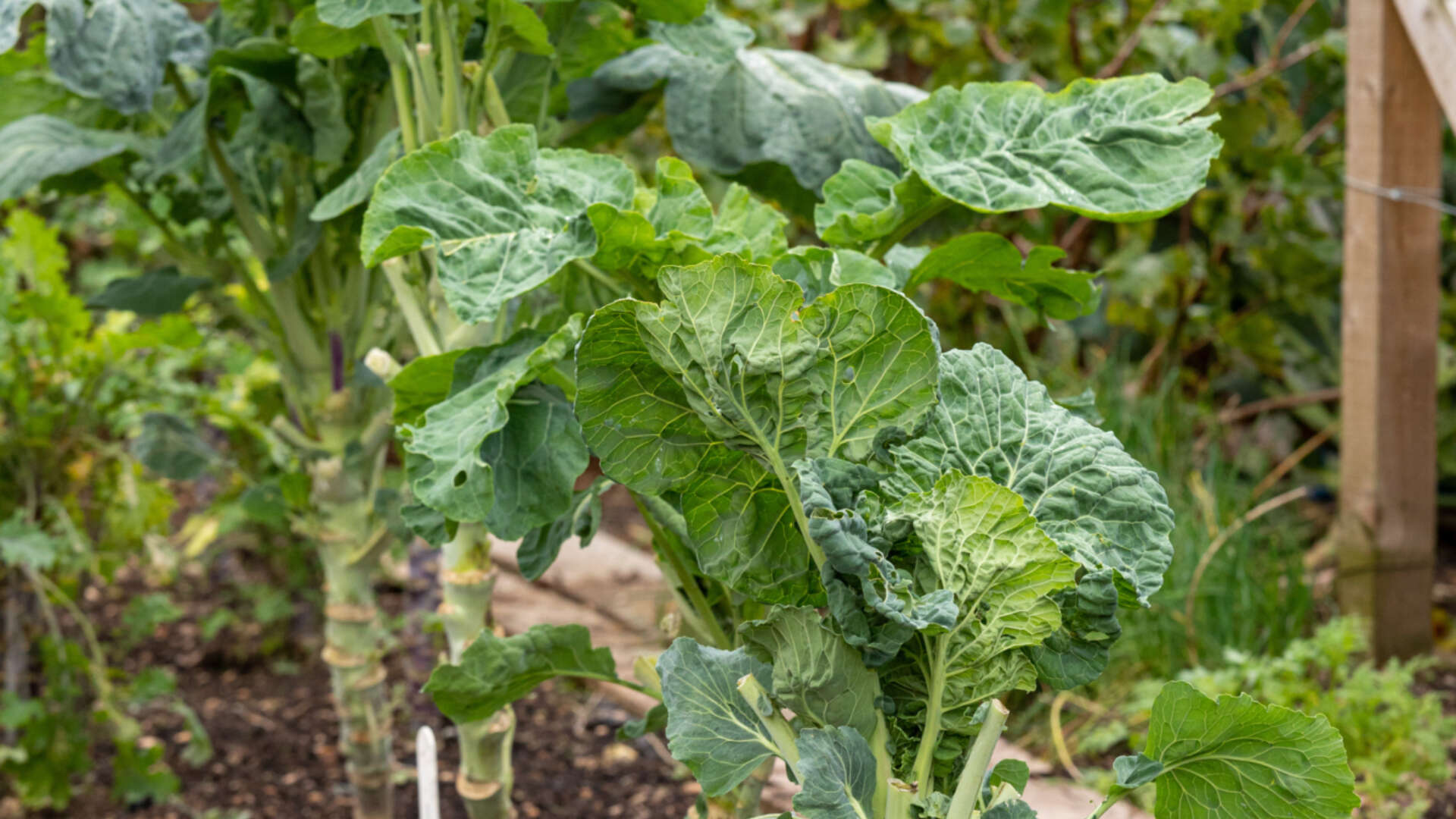How to grow vegetables and herbs
Perennial vegetables

Think of perennial veg as a mini permaculture in your organic garden. They save you the extra resource needed for sowing, planting and raising new plants every year. That’s seed, potting compost, water, fertiliser, all saved – as well as your time!
Here are some examples:
Perennial brassicas
Perennial brassicas, such as kales and cabbages, can be divided into tall, woody, upright plants and low bush-forming varieties.
How to grow
- Plant in deep, fertile soil. Tall upright varieties need support by tying into stakes.
- To prevent flower heads from seeding, cut and eat frequently – as you would with annual sprouting broccoli.
- Most plants will survive winter and last for a number of years.
- Remember, all varieties are susceptible to the usual brassica pests, such as cabbage white caterpillars, white fly, club root and pigeons. See Pests and Diseases for tips on how to manage them.
- You can get some seed online, but perhaps the easiest way to propagate is by cuttings – either from your own, or a neighbour’s plant. Pull off a growing shoot, trim the bottom to just below a leaf node and plant it in a pot with a mix of potting medium and grit.
Recommended varieties:
Tall, upright plants: Nine Star Perennial broccoli, Purple Tree collard (collard is the American name for kale), Jersey Walking Stick cabbage/kale
Bushy plants: Daubenton kale, Ewiger kohl (a type of cabbage), African kale (which can also grow tall)
Other brassicas include:
Horseradish - These tough plants will grow in most soils, preferring full sun. Once planted, they require little to no maintenance. It will spread, however. The hot spicy roots are used to add heat to sauces and curries, and the leaves can be eaten when young and not too tough. The roots are easily divided for propagation.
Turkish rocket - Related to the self-seeding Wild rocket, the cut and come again leaves of this Turkish variety have a hot, mustardy flavour. Grow in warm, free draining soil. Leaves are best eaten when young. Flowers are also edible and can be cut like sprouting broccoli. The roots are easily divided for propagation.
Perennial roots and tubers
True perennial roots and tubers are frost hardy and don’t need lifting. Therefore, potatoes, oca and yacon aren’t strictly perennial. The following, however, will survive through the bitterest of winters:
Chinese and Jerusalem artichokes - Plant in a moist, light soil. They will spread easily. Chinese artichokes have smaller, crustacean shaped tubers and blue flowers which bees love.
Scorzonera - Plant in rich moist soil. The tubers take a couple of years to achieve maturity and a good size. The very young leaves are also edible, as are the flowers. New plants can be grown from root cuttings, or from the top of a plant, replanted.
Skirret - Plant in a friable, moist soil. This helps with lifting the roots, which are thin and sweet tasting, with clumps of leaves that look like a parsnip plant (it is from the Apiaceae family.) Plants can be raised from seed or by root division.
Leafy perennials
Caucasian spinach - This tall (up to 3 mtrs) variety of spinach type plant is a climbing, scrambling plant with deep tap roots. It needs to be planted in rich deep soil. The dark green leaves can be harvested for new shoots and leaf growth as soon as they appear in spring. The plant dies back in winter. Propagation is by layering or root division.
Garden sorrel - Grows easily in a moist light soil. From the polygonaceae family, which includes the common dock, sorrel leaves are rich with potassium and oxalic acid. They can be used in soups, salad and sauces, and to liven any dish which includes spinach.
Grape vines - Plant in a rich, but well-drained soil in full sun. Often overlooked as a leaf vegetable, the leaves are delicious when really young and can be added to salads, as well as stuffed (as in dolmades).
Dandelion - There is probably no need to plant these. The leaves can be bitter, so eat when young. And add flower petals in salads. The roots can be dried and ground up to make a coffee substitute.
Stinging nettle. Like the dandelion, the leaves are full of nutrients and minerals. Nettles also like a good fertile soil. Pick when young, as old leaves have a strong unpalatable taste. Use gloves, and blanch to neutralise the stinging hairs. Add to teas, soups and stews.
Self-seeding salad leaves - ie miners’ lettuce (purslane, claytonia), lambs lettuce (corn salad), coriander. Although not strictly perennial, these self-seeders will scatter their seeds in autumn, ready to germinate without your intervention, in the spring.
Alliums
Most onions and leeks need to be lifted, but some varieties self-seed – creating bulblets which can be planted. Others, such as chives, crow garlic and bunching onions, all provide tasty leaves which can be cut, leaving the bulb in the soil.
Finally, a word of warning……
Because perennials are as prone to disease as annuals, we recommend that you don’t rely on them to provide your whole vegetable output. If they contract club root disease, white rot or allium leaf miner, they will be decimated and can transmit the disease into the soil.
Good organic practice involves rotating what and where you plant, each year. This avoids a build up of particular soil diseases. If you have room, we suggest keeping perennial vegetables separate from annuals. And, despite their name, we suggest moving them every few years to keep them healthy – especially brassicas.
Our thanks to Garden Organic member David Wall, who kindly contributed to this article.
Join Garden Organic!
By becoming a Garden Organic member you can join thousands of people who are already leading the movement for an organic and sustainable future for us all. And get great member benefits!
Join today